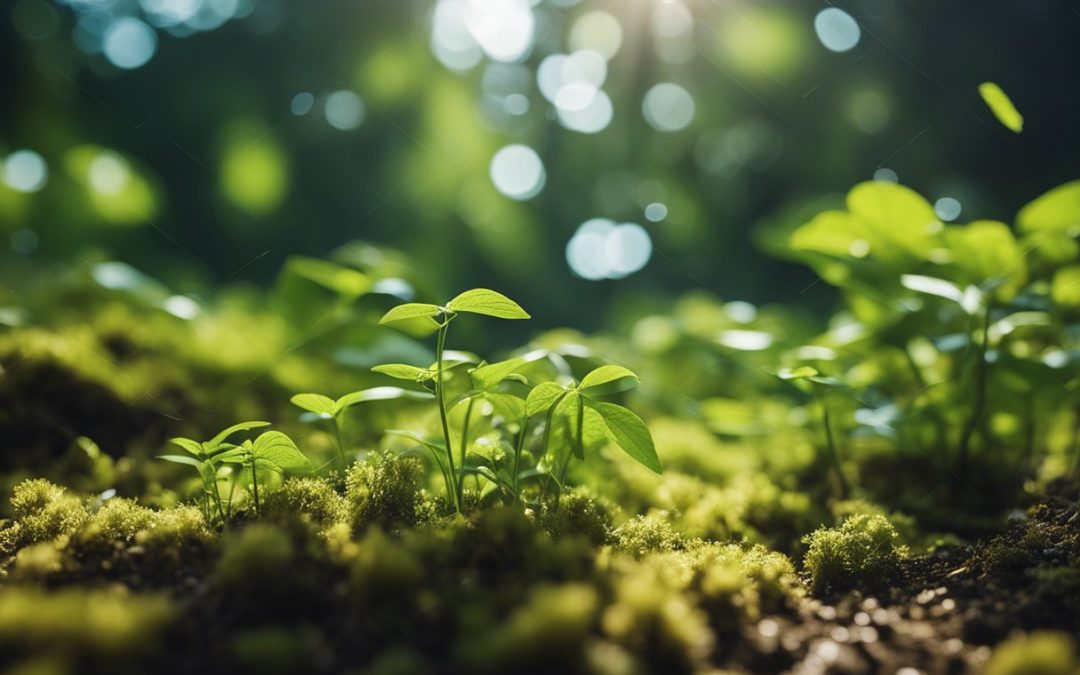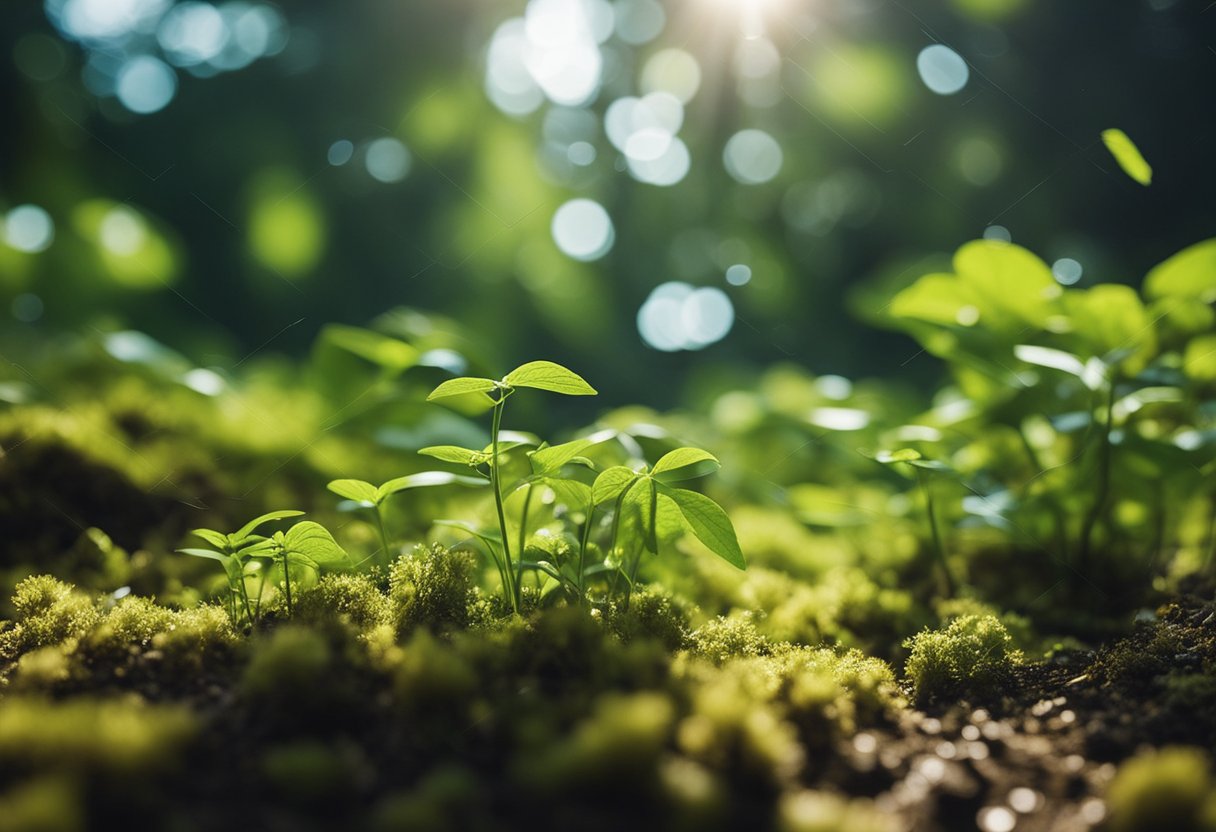Ecosystems Challenges: Addressing Biodiversity Loss
Ecosystem challenges are different around the world, from tropical rainforests to coral reefs, but they are bound by a common challenge: the threat of disruption. This disruption comes in various forms, from environmental shifts to human-induced changes. A primary concern that spans these natural systems is the degradation of biodiversity. Biodiversity, the variety of life found in an area, is crucial for maintaining ecosystem resilience and functionality. As species are lost, ecosystems can become fragile, losing their ability to adapt to changes and provide the services upon which life depends.
Another pervasive issue facing ecosystems is the alteration of natural processes. Activities such as urban development, agriculture, and pollution modify the water cycle, soil composition, and air quality, often with adverse effects. For example, nutrient run-off from agriculture can lead to water body eutrophication, upsetting aquatic ecosystems by promoting excessive algae growth and depleting oxygen levels, which can kill fish and other marine life.
Moreover, climate change stands as a cross-cutting challenge that affects ecosystems on a global scale. Rising temperatures, shifting precipitation patterns, and more frequent extreme weather events can stress or even collapse ecosystems. Climate effects are accelerating issues such as sea-level rise, which threatens coastal ecosystems, and increased wildfires, which can alter forest landscapes. It is essential to understand these challenges in order to devise and implement strategies to mitigate their impacts and preserve the integrity of Earth’s diverse ecosystems.
Climate Change Impact and Ecosystem Challenges
Ecosystems worldwide are experiencing significant disturbances due to climate change. These changes include a range of direct and indirect implications for biodiversity and the services ecosystems provide.
Rising Temperatures
and Rising temperatures are causing geographical shifts in habitats and altering species distributions, adding to the ecosystem challenges. For instance, a study noted that European butterflies had moved north by approximately 114 km from 1990 to 2008 as a response to temperature increases. Warmer temperatures can also lead to heat stress in plants and animals, affecting growth and reproduction.
Ocean Acidification
The increase in atmospheric carbon dioxide levels leads to ocean acidification, a phenomenon that poses a threat to marine life, especially organisms with calcium carbonate structures, such as corals and shellfish. These structural changes can disrupt marine food webs and biodiversity.
Extreme Weather Events
Climate change is also intensifying the frequency and severity of extreme weather events. Increased storm intensity, for example, can result in habitat destruction and greater soil and coastal erosion. These events contribute to the challenges faced by species in maintaining their ecological niches.
Habitat Loss
Habitat loss is a pressing issue that affects biodiversity worldwide. It is the degradation or complete elimination of a natural habitat, critically threatening the survival of many species.
Deforestation
Deforestation refers to the clearing or thinning of forests for human activities. It is the primary cause of habitat destruction and ecosystem challenges in many regions, especially in tropical areas. According to a Biology LibreTexts article, logging is a significant driver of this process, causing severe biodiversity loss.
Urbanization
Urbanization involves the expansion of cities and towns into natural areas, which leads to habitat fragmentation and loss. Habitats become isolated and species are often unable to adapt or migrate, jeopardizing their survival. An example is reflected in the disruption of animal migration patterns and plant dispersal.
Agricultural Expansion
Agricultural expansion contributes to habitat loss as natural regions are converted into farmlands. The change in land use directly impacts ecosystems, replacing diverse habitats with monocultures or grazing land. The WWF highlights this trend, noting its role in the decreasing numbers of wild species.
Pollution
Pollution represents a significant challenge for ecosystems worldwide, leading to health concerns, environmental degradation, and a host of ecological imbalances.
Air Pollution
Air pollution is an escalating problem with serious implications for both the environment and public health. The United States faces several air pollution challenges, including the need to meet health-based standards for common air pollutants, limit climate change, reduce toxic air pollutants, and protect against the degradation of the stratospheric ozone layer. Such pollutants not only affect outdoor air quality but also degrade indoor environments, causing various health problems.
Water Contamination
Water bodies are not immune to pollution; they are frequently contaminated by various pollutants, including industrial runoff, plastic waste, and other harmful materials. The introduction of such substances can significantly damage the quality of water, leading to detrimental effects on marine life and ecosystems. Plastic pollution, for instance, has been reported to cause severe issues for sea life, resulting in suffocation, infections, and even death, while also causing escalating concern about its projected increase by 2030.
Soil Degradation
Lastly, soil degradation is a major concern resulting from pollution through agricultural runoffs, industrial spills, and improper waste disposal. These activities cause a decrease in soil quality and fertility, leading to problems such as reduced agricultural productivity and alteration of soil ecosystems. The persistent use of chemicals and disposal of hazardous waste are some practices that contribute to the degradation of soil, challenging the capacity of the land to support plant, animal, and human life.
Invasive Species
In ecosystems around the world, the spread of invasive species presents a formidable challenge. These species compete with natives, disrupt food webs, and colonize through various introduction mechanisms.
Competition with Native Species
Invasive species often thrive because they encounter no natural predators in their new environments. Their populations can grow unchecked, allowing them to outcompete native species for essential resources like food, water, and space.
sDisruption of Local Food Webs
By virtue of their competitive advantage, invasive species can alter food webs and diminish biodiversity. They may prey on native species indiscriminately or outcompete them, which can lead to native species’ decline or extinction, destabilizing the entire ecosystem.
Introduction Mechanisms
The pathways for invasive species to enter new territories are numerous. They can be introduced both intentionally and accidentally by human activity, through global trade, transportation, and the unintended release of nonnative species into the wild. Natural events such as storms can also carry species to new regions where they can become invasive and contribute to ecosystem challenges.
Resource Depletion
Resource depletion is the consumption of natural resources at a rate faster than the Earth’s capacity to replenish them. This pressing issue affects ecosystems globally, disrupting the balance of the natural world.
Overfishing
Overfishing threatens marine life by depleting fish stocks beyond sustainable levels. The consequences of overfishing include the loss of species and negative impacts on the food chain. For instance, the Atlantic cod fisheries faced a severe collapse due to overfishing, leading to economic and ecological upheaval.
Unsustainable Agriculture
Unsustainable agriculture practices impact ecosystems through land degradation, water scarcity, and biodiversity loss. Intensive farming often leads to soil erosion and the depletion of groundwater for agriculture, which can result in decline of freshwater ecosystems. It illuminates the unsustainable use of resources in current agricultural practices.
Fossil Fuel Extraction
Fossil fuel extraction, such as coal mining and oil drilling, is a primary cause of resource depletion. This extraction process leads to habitat destruction and contributes to environmental pollution. For example, the combustion of fossil fuels is a significant contributor to climate change, which accelerates the degradation of various ecosystems.
Human Population Growth
Human population growth is one of the most pervasive factors impacting ecosystems worldwide. Since the mid-20th century, the global population has seen a dramatic increase, scaling from approximately 2.6 billion people to an estimated 8.1 billion by 2024. This surge plays a decisive role in shaping natural habitats and biodiversity.
Key Pressures from Population Growth:
- Resource Extraction: More people necessitate a higher withdrawal of natural resources, ranging from fossil fuels to wildlife.
- Agricultural Expansion: To feed a larger population, natural habitats are converted into farmland, affecting soil productivity and local ecosystems.
- Urbanization: Increased housing demands lead to urban sprawl, infringing on ecosystems and reducing habitat areas.
- Waste Production: A higher population generates more waste, leading to pollution and degradation of ecosystems.
Climate concerns are also exacerbated by population growth. Human activities, driven by a need to support more people, contribute to climate change, which in turn influences the stability of various ecosystems.
There is an observable effect on biodiversity, which gets impacted as growing human populations accelerate habitat destruction. With more people, there is a higher consumption level, especially in affluent regions, which significantly affects many species’ survival.
Ecosystems are stressed under these growing pressures, and the balance between population growth and ecological sustainability becomes precarious. Researchers emphasize the importance of understanding and mitigating the impacts, suggesting that the path we choose now will shape the Earth’s ecological future.
Frequently Asked Questions
Environmental challenges are diverse and complex, affecting ecosystems in multifaceted ways. This section addresses some of the most pressing questions regarding these challenges.
How does climate change affect the biodiversity within ecosystems?
Climate change leads to shifts in temperature and weather patterns, which can alter the habitats and resources available to species. This results in changes to species distributions and can impair ecosystem services as detailed by The Nature Conservancy.
In what ways do abiotic factors shape the characteristics of different biomes?
Abiotic factors such as soil, climate, and water availability are fundamental in shaping biomes. They dictate the types of species that can thrive and the sustainable food webs within those ecosystems, as explained by the U.S. Geological Survey.
What are the predominant threats to marine ecosystems today?
Marine ecosystems face threats from overfishing, pollution, and ocean acidification. These challenges contribute to habitat destruction and the decline of marine biodiversity.
How are various ecosystems impacted by changes in the geosphere?
Alterations in the geosphere, including landforms and soil composition, can affect water drainage, nutrient cycles, and the physical space available for ecosystems to exist.
What are the primary human-induced challenges to maintaining ecosystem balance?
Human activities such as deforestation, pollution, and urban development disrupt the balance of ecosystems. They can lead to loss of species, habitat fragmentation, and other negative impacts on ecosystem services, all mentioned in articles by organizations like The International Union for Conservation of Nature (IUCN).
How can we mitigate the negative effects of our activities on ecosystems?
Mitigation strategies include reducing greenhouse gas emissions, promoting sustainable land use, restoring degraded ecosystems, and adopting conservation practices. Collaborative efforts at various scales are necessary to address these human-induced challenges.
For details on how Potomac eCycle can help with your environmental issues, contact us.



Recent Comments